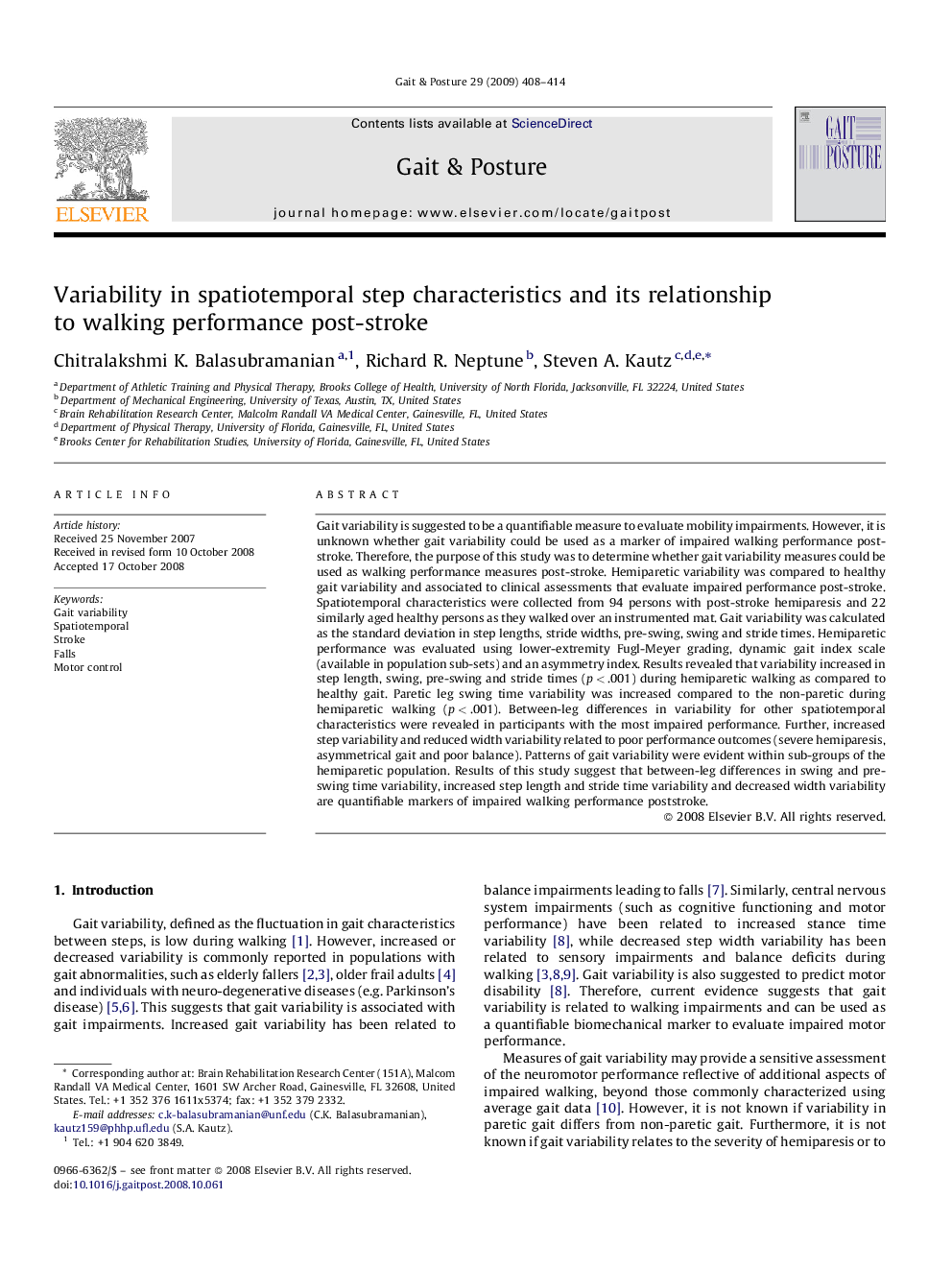| کد مقاله | کد نشریه | سال انتشار | مقاله انگلیسی | نسخه تمام متن |
|---|---|---|---|---|
| 4057690 | 1265700 | 2009 | 7 صفحه PDF | دانلود رایگان |

Gait variability is suggested to be a quantifiable measure to evaluate mobility impairments. However, it is unknown whether gait variability could be used as a marker of impaired walking performance post-stroke. Therefore, the purpose of this study was to determine whether gait variability measures could be used as walking performance measures post-stroke. Hemiparetic variability was compared to healthy gait variability and associated to clinical assessments that evaluate impaired performance post-stroke. Spatiotemporal characteristics were collected from 94 persons with post-stroke hemiparesis and 22 similarly aged healthy persons as they walked over an instrumented mat. Gait variability was calculated as the standard deviation in step lengths, stride widths, pre-swing, swing and stride times. Hemiparetic performance was evaluated using lower-extremity Fugl-Meyer grading, dynamic gait index scale (available in population sub-sets) and an asymmetry index. Results revealed that variability increased in step length, swing, pre-swing and stride times (p < .001) during hemiparetic walking as compared to healthy gait. Paretic leg swing time variability was increased compared to the non-paretic during hemiparetic walking (p < .001). Between-leg differences in variability for other spatiotemporal characteristics were revealed in participants with the most impaired performance. Further, increased step variability and reduced width variability related to poor performance outcomes (severe hemiparesis, asymmetrical gait and poor balance). Patterns of gait variability were evident within sub-groups of the hemiparetic population. Results of this study suggest that between-leg differences in swing and pre-swing time variability, increased step length and stride time variability and decreased width variability are quantifiable markers of impaired walking performance poststroke.
Journal: Gait & Posture - Volume 29, Issue 3, April 2009, Pages 408–414